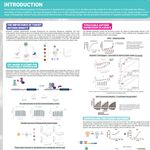
Keynote Presentation: The Massively Parallel Sequencing (MPS) Revolution
-
David Smith, PhD
Professor and Consultant, Department of Laboratory Medicine and Pathology, Mayo ClinicBIOGRAPHY
The development of automated DNA sequencers using fluorescent di-deoxy nucleotide sequencing and capillary electrophoresis made it possible to generate the first draft sequences of the human genome about 20 years ago. This information revolutionized our understanding of the organization of the human genome, but the cost for doing this was several hundred million dollars. The solution to dramatically decreasing the cost of sequencing was the development of technologies that all depended upon the simultaneous sequencing of a very large number of DNA molecules which was termed massively parallel sequencing (MPS). There are two generations of these technologies. The first generation depended upon amplifying individual DNA fragments and then determining the sequence of those amplified fragments. The amplification process and the subsequent sequencing of those fragments could only be performed on very short fragments and thus all first generation MPS are short-read technologies. There are two strengths to these approaches and that is sequence accuracy and ultimately tremendous sequence output. In my talk I will focus on the various first generation MPS technologies that were developed and their strengths and weaknesses. I will also describe how with the use of these technologies it became possible to increase sequence output (and correspondingly decrease sequence costs) from hundreds of millions of dollars two what is now approaching $100 per genome. I will also describe how this will change just about everything in our society. Other speakers in this session will then describe some of the second generation MPS technologies which can obtain very long DNA sequences and are thus long read sequencing technologies. We will also hear about some of the clinical applications of both first and second generation MPS technologies as well.
Learning Objectives:
1. To understand about the different short read MPS technologies and their strengths and weaknesses
2. To understand how being able to characterize the complete genome sequence for an individual for $100, or less, will completely transform just about everything
Please update your information
Certificate of Attendance
DOWNLOAD CERTIFICATE




